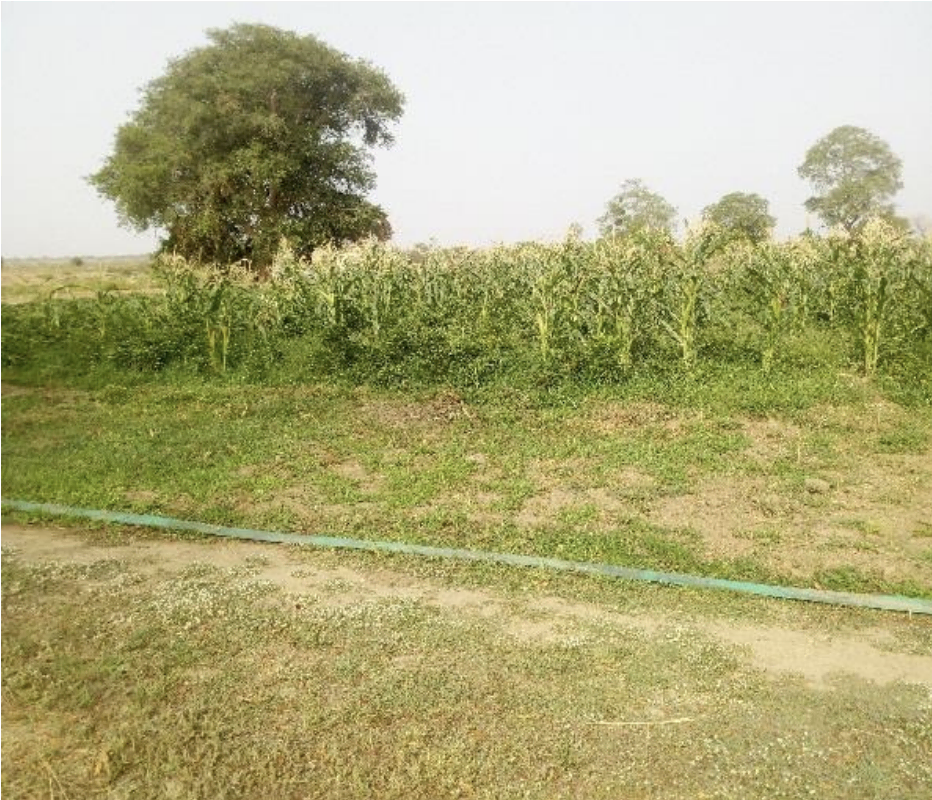

Living Paradigms is a series about what we can learn from the customs and cultural practices of others when it comes to solving problems. It is sponsored by Wonderstruck.
Every year, when the monsoons arrive on the North India Gangetic plain, the river spreads its girth across miles on either bank. When the floodwaters recede, they leave behind organic material, which Siyaram Bhind, a farmer in Mirzapur, a town in eastern Uttar Pradesh, calls “black gold.” Downstream, in the neighboring district of Bhadohi, another farmer, 29-year-old Rohit Bhardwaj, looks at his bumper crop of painted gourds on the Ganges floodplain, and calls it a “blessing from mother Ganges.”
For centuries, farmers like Bhind and Bhardwaj have engaged in complex trade-offs between coping with the challenges of floods and capitalizing on the benefits that floods bring: fertile alluvial soil and a natural irrigation mechanism. “This rudimentary form of agriculture has been practiced since history,” says Rinku Singh, PhD, who has researched the impact of what’s known as flood recession agriculture along the Gangetic plain. But today, as climate change is causing rainfall and flooding to become more erratic and intense, flood recession farming is more important than ever before: Singh has found that it boosts the livelihood and food security of marginal farmers living near riverbanks, making them more resilient to the economic consequences of floods. Moreover, it incentivizes them to not construct buildings or roads or mine sand from the floodplain, which, in turn, keeps the river in good health.
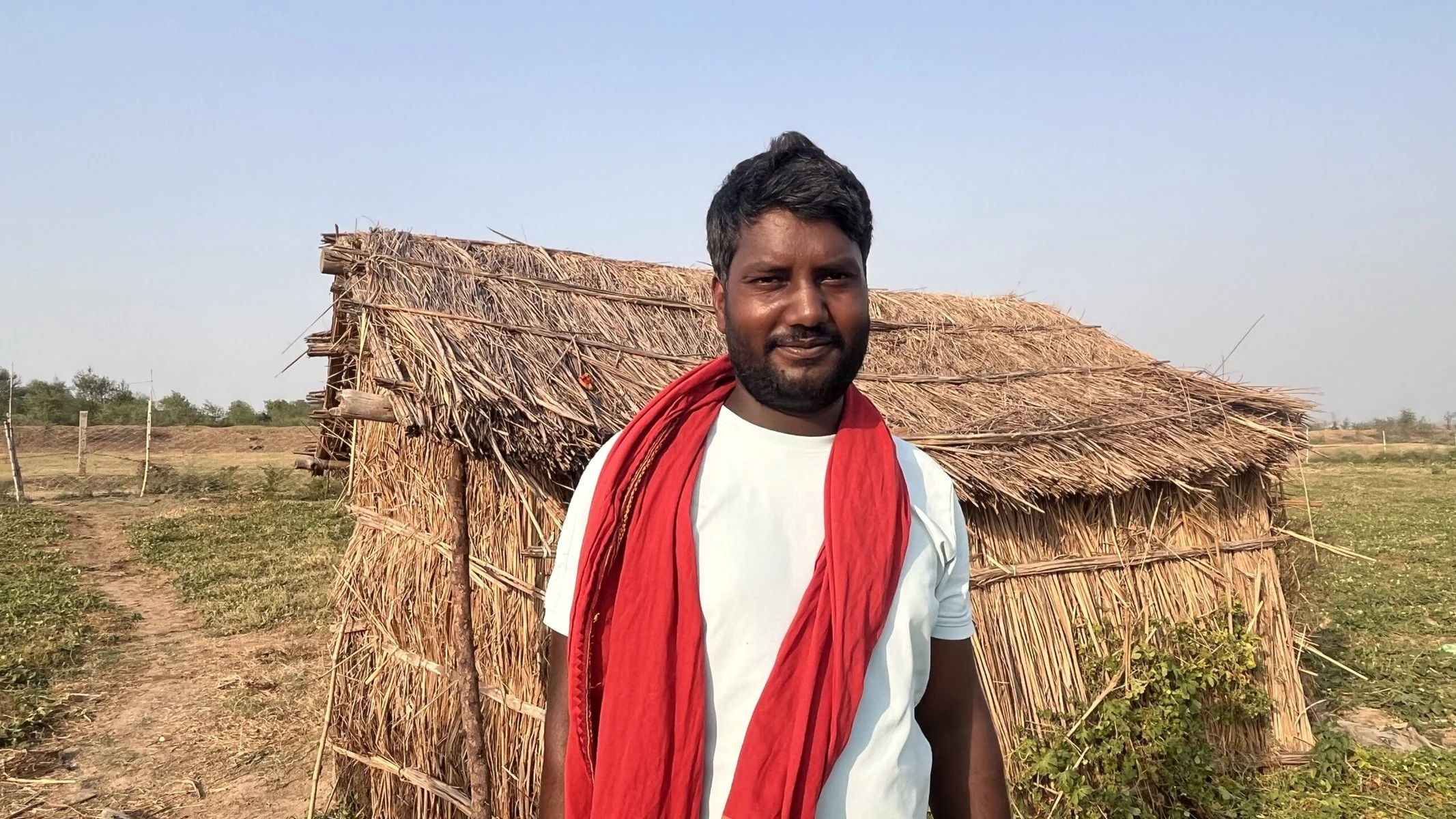
“Almost every year, the river water enters our village and makes our lives miserable, but it also leaves behind fertile soil that gives us a good harvest,” Bhind says, pointing out varieties of gourds that thrive in the well-drained floodplain with its topsoil of silt. He plants peas, chickpeas and mustard in addition to other vegetables when the floodwaters recede in October. And after harvesting the pea crop in February, he says that from late March until the floods return in mid-July, he is able to harvest vegetables every four to five days.
This is harder than it sounds, however: The floodplain is more exposed than inland farms in winter, which leaves the crop vulnerable to night temperatures that fall below 40 degrees Fahrenheit. Regular depredations by herds of stray cattle, wild pigs and blue bulls compel farmers to wake up every two hours to check on their crops. And in summer, once the crop bears fruit on the windswept floodplain, it is easily scorched by the hot winds from the west. Yet Bhind — perhaps because he spends very little on irrigation (even in summer, he waters his crop just once or twice a month, while fields further inland need watering twice a week) and fertilizer — chooses to till the floodplains, as do thousands of others.
Floodplain farming has ancient origins; records suggest it was practiced by the Indus Valley civilization, which existed between 2500 and 1700 B.C.E. and is the earliest known urban culture of the Indian subcontinent, as well as in ancient Egypt. Today, farmers in some of the poorest and least climate resilient regions in sub-Saharan Africa, South America and Asia continue to practice flood recession farming on river floodplains, lake margins and other wetlands where water levels rise and fall predictably, to cope with floods, droughts and climate change. In Western Mali, farmers use the seasonal overspill of the Senegal River in August and September to cultivate sorghum, beans and melons. In the Mekong Delta, Cambodian farmers use the flood in different ways to grow the region’s staple food, rice. Some directly plant saplings in the floodwater during the wet season, some trap floodwater in bunds (embankments) to use for irrigation in the dry season, and others grow rice in the dry season when the floods recede, and store floodwater in bunds.
The world over, floods are the most expensive of all weather-related natural disasters. And low-income countries are disproportionately exposed to flood risks and more vulnerable to disastrous long-term impacts. “For marginal and landless farmers living near rivers, profits from cultivating the floodplain help them bear the ill effects of the flood,” says Singh, now at the Central Agroforestry Research Institute in Jhansi, Uttar Pradesh. “And I’ve seen this mode of farming even attract migrants from over 100 miles away!”
Weighed down by negative news?
Our smart, bright, weekly newsletter is the uplift you’ve been looking for.Bhardwaj is one of them. He belongs to a family of landless farmers in Ballia in Bihar. “For the last several generations, we’ve migrated to the floodplain of the Ganga in Uttar Pradesh every October,” he says. “After the river recedes, we prepare the fields and plant root cuttings of painted gourd.” This year, he, along with five other kinsmen from Ballia, has rented about 20 bighas (about seven acres) of floodplain for about $3,600 US for the year. “We’ve spent about $1,500 US on hiring labor and setting up an electrified solar fence to keep out pests,” he says. “Even though this year has been scorchingly hot and the harvest not as good as it’s been in the past, we’re plucking up to 1,200 kilograms of painted gourd every four days — and by the time the flood comes, we’d have more than doubled our investment.”
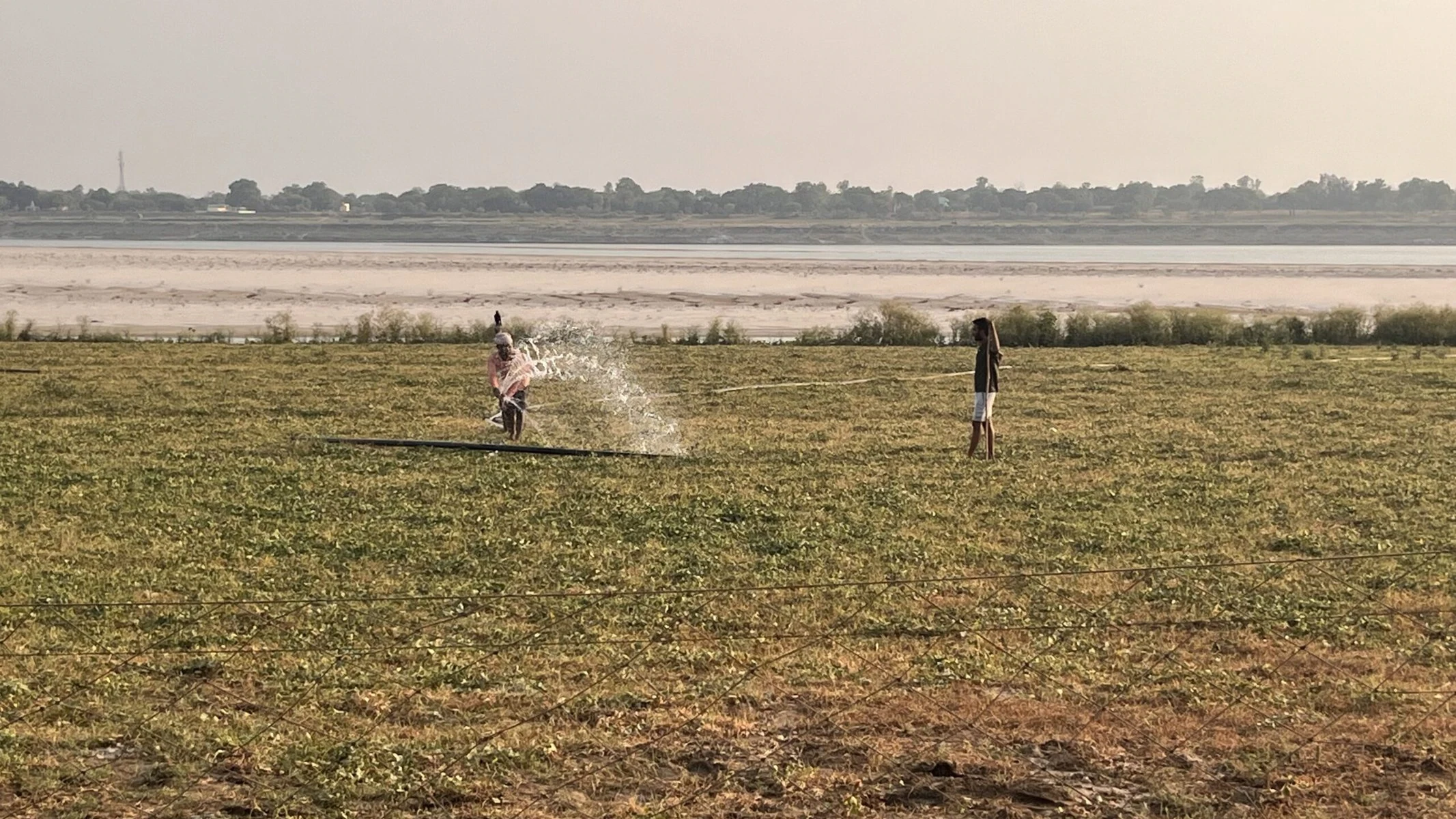
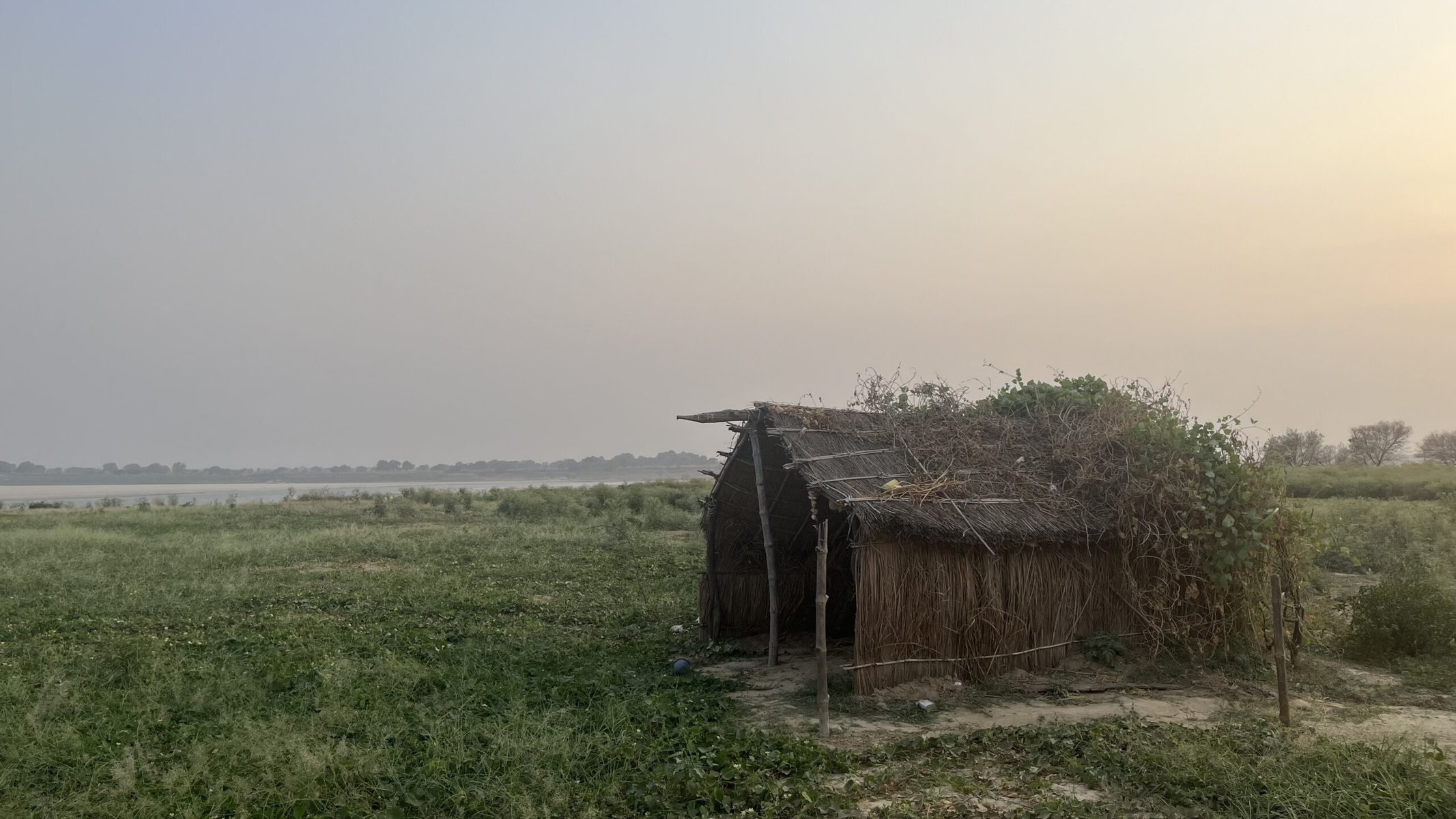
In the distance, Bhardwaj’s kinsmen are pumping water from the river for the monthly drenching of the fields. “Not having to irrigate the crop often is a big deal for farmers,” he points out. “It reduces both labor and costs, yields a better harvest than farming inland and also reduces our dependence on rains.” The work is lucrative enough that Bhardwaj, a college graduate with a vocational degree, was able to quit his desk job in Delhi and become a full-time farmer.
But scientists like Singh say that farming on floodplains, which are crucial for river health, needs to be better monitored and regulated.
Singh first became interested in flood recession farming when he came across it during fieldwork for his doctoral dissertation on the ecosystem services provided by different elements of the Gangetic floodplain in Varanasi. While it was an economic boon for farmers, he was perturbed to see them using chemical fertilizers and pesticides, and also extracting groundwater through pumps.
This is still the case, as I see for myself, walking in the fields with Bhardwaj, where pencil-thick vines of painted gourd are interspersed with grass on the ground. He calls out to a fellow farmer, pointing to the grass: “We need some herbicide to kill the grass before it overruns the crop!” Bhind states that many floodplain farmers see no harm in using chemical pesticides and fertilizer to improve yields. “Also, as summers seem to be getting hotter and drier, many have installed pumps in their fields on the floodplain,” he says.
A 2023 report calculated that the world lost about 600,000 square kilometers of floodplains between 1992 and 2019, converted from natural forest, grassland and wetland conditions to 460,000 square kilometers of new agricultural land and 140,000 square kilometers of new developed areas. Singh fears that if left unplanned and unregulated, flood recession farming could quickly lead to other problems for riverine ecosystems: overuse of river water, depletion of water from the floodplain, the leaching of toxic pesticides and fertilizer into the river, and their eventual degradation. But if farmers adopt the age-old practices of multi-cropping and minimal input farming — and avoid all chemical fertilizers, pesticides and manual irrigation — flood recession agriculture can be not just sustainable, but also economically empowering.
A flood recession farming model being implemented about 150 miles away from Bhardwaj’s fields offers insights into how this might be done. The district of Bahraich in eastern Uttar Pradesh is one of the state’s most flood-prone, but it has a bigger problem. The rivers Ghagra and Saryu that flow through it have been shifting course periodically, gobbling up homes and agricultural land. A local NGO, Panchsheel Development Trust, is training 150 women farmers who have been displaced by the river, to grow high-value vegetables on the floodplain using natural, organic techniques like multi-cropping. They plant gourds, for which there is high demand in local markets, with onion, green chili peppers, mustard, groundnut and garlic, among others. This maintains soil fertility and helps farmers hedge their bets, especially with the gourds, which are extra-sensitive to climate changes.
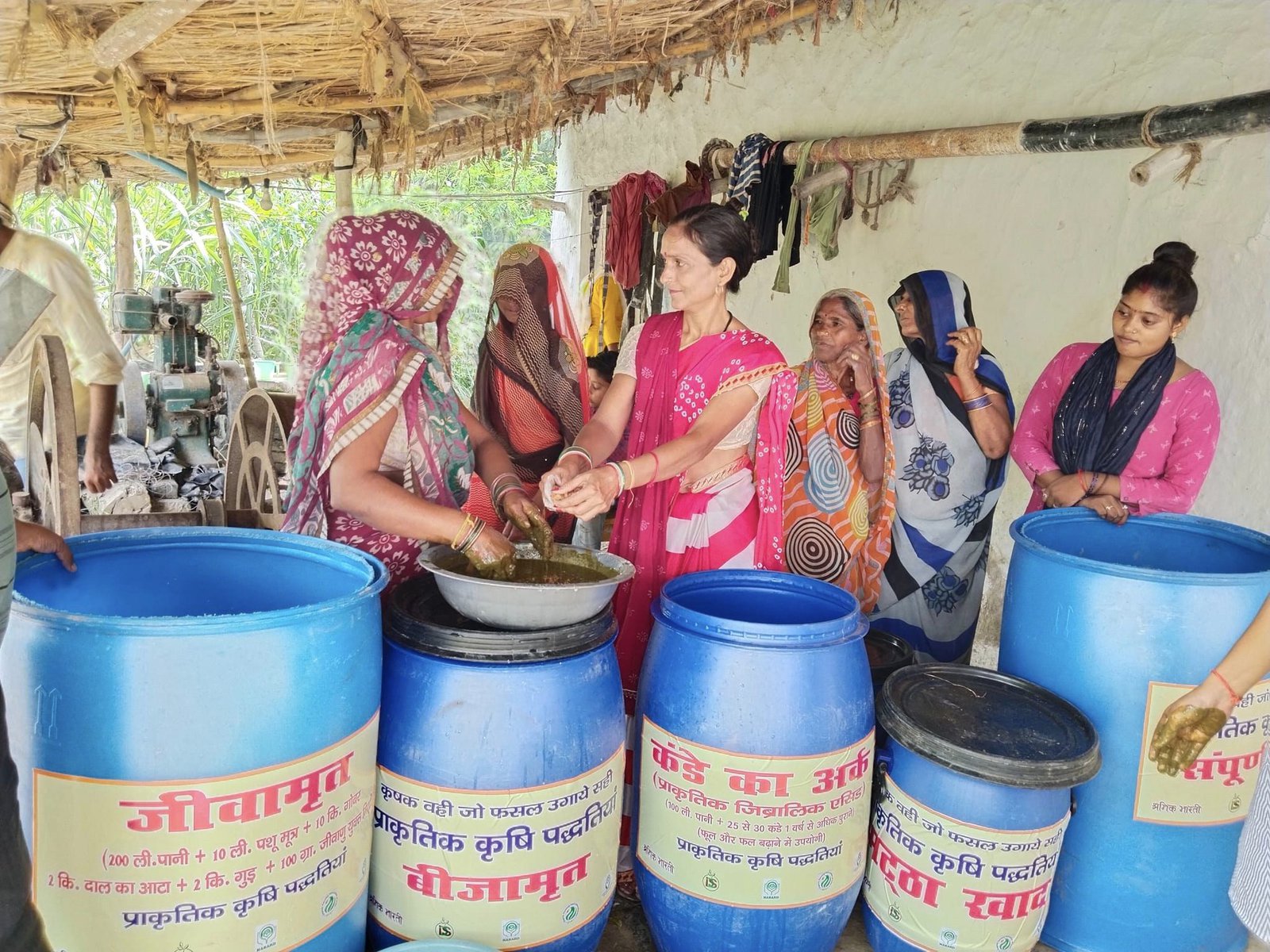
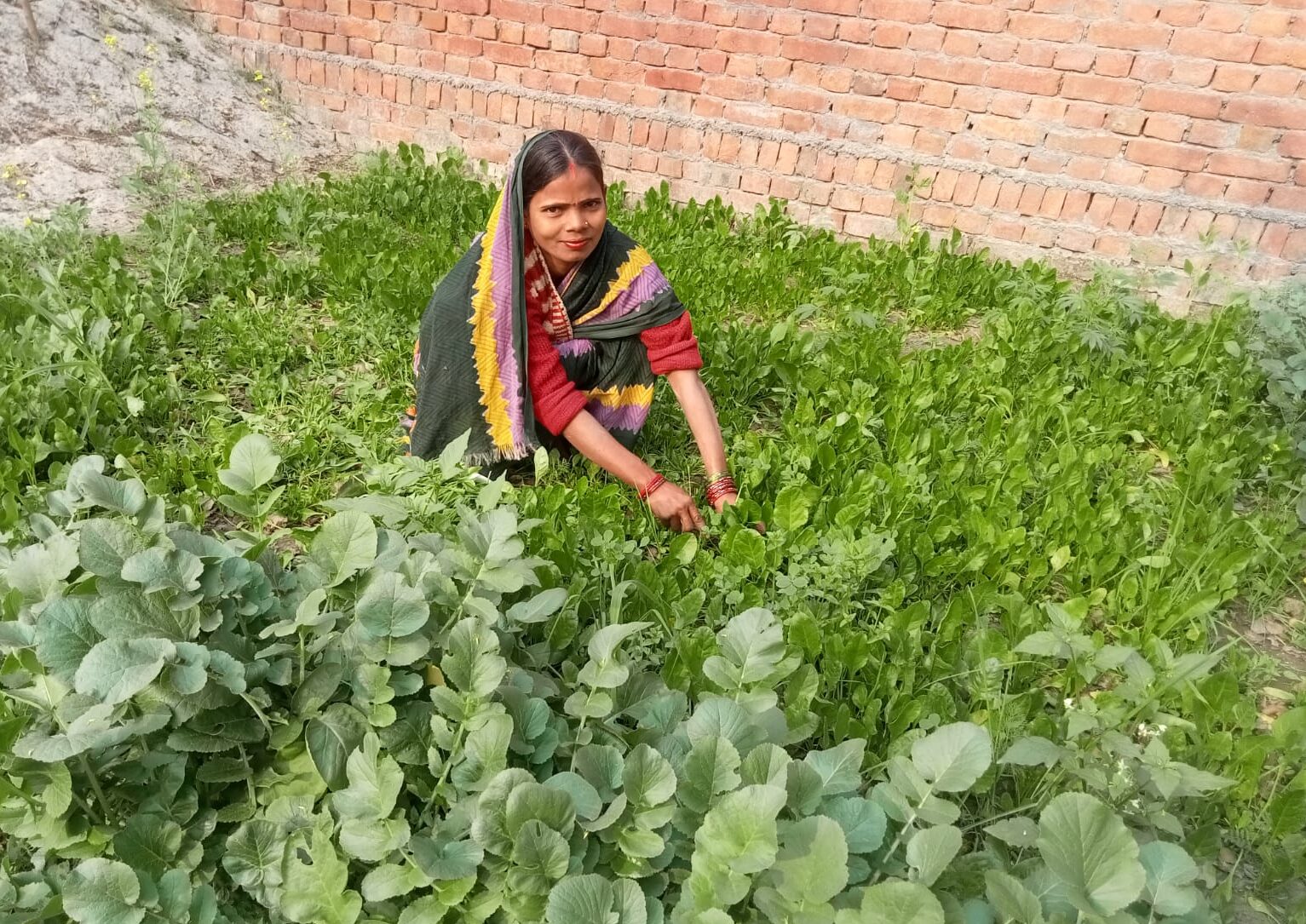
Farmers also learn to make and use organic fertilizer and crop medicines using cow dung, to ensure that the floodplain remains uncontaminated. Dhruva Kumar started the Trust in 2003 to help women farmers develop better resilience to the rivers’ changing moods. “Over the years, the men migrated for better livelihoods, so we trained the local women in organic farming techniques to aid food and livelihood security, without compromising riverine health,” he says.
Halima, whose village and house were inundated when the Ghagra changed course in rural Bahraich in 1998, is among those women. She and her husband worked as daily wage laborers to support their family. In 2022, the couple was trained in natural farming by the Trust, and today, they earn a reasonable profit growing organic vegetables. Anita Devi, another farmer who was similarly displaced, now grows organic spinach, mustard, coriander and radish for home consumption, and sells the surplus in the market. “Our farmers are able to earn over $20 US a day during harvest season, which is more than enough to meet their needs, and all this, without any negative impact on the floodplain and its function as a water sink, biodiversity habitat and flood absorber,” Kumar says, advocating that all floodplain farming the world over should only be done using organic means.
How Kumar’s sustainable farming model will spread to other river plains in India remains to be seen. In the meantime, as the sun rises over the Ganges in Bhadohi, Bhardwaj oversees the harvest of painted gourd. “It’s miraculous, when you think of it,” he murmurs. “The floods destroy, but the river only gives back…”



